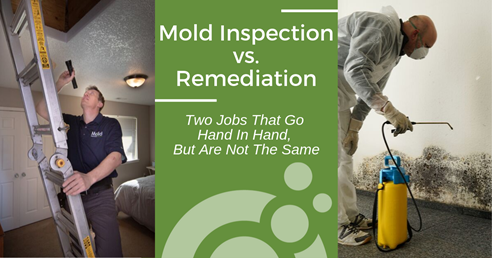
Article Information
Dr. Spurgeon has a multidisciplinary doctorate degree in Analytical Chemistry and Environmental Health from the University of Pittsburgh; and was a Certified Industrial Hygienist from 1993 – 2013. He has performed over 4,000 residential and commercial investigations involving water intrusions and microbial contaminants; has taught courses on mold investigations, sampling, and data interpretation methods; and has served as an expert witness in numerous mold cases. Additional articles from Dr. Spurgeon are available at www.bi-air.com. His books are available at expertonmold.com.
Winter 2019.
With the IICRC definitions, you determine how and where to remediate by analyzing mold spores in settled dust. Clearly 99.99% of the industry also uses visual cues, moisture meters, and air sampling as part of their inspection procedure. Dr. Spurgeon has completely re-written the definitions of IICRC Fungal Contamination Conditions from his point of view. Makes for interesting reading.
Since S530 (Standard of Indoor Mold Assessment) is now in development, the timing is urgent for asking questions such as:
How can you determine the presence and location of actual mold (hidden or visible active or dormant) for the purpose of remediation by analyzing spores in surface dust using Direct Microscopic Examination, which is the commonly used lab analysis procedure?
What are the procedures for determining if mold spores in the air are coming from the AC/ducting vs accumulated dust vs mold growth in or on walls, attics or basements?
What is the purpose of an assessment? To find mold growth hidden in walls that is not aerosolized? To be able to identify and eliminate irritation/illness?
Rating Breakdown
Why 5-Star? The article draws attention to the definition of IICRC Conditions. Useful article for discussion purposes.
1-5 Stars System
- Positive: Greater than or equal to 4 (4.0 – 5.0) MUST READ
- Neutral: Greater than or equal to 3 but less than 4 (3.0 – 3.9)
- Negative: Less than 3 (2.9 – 0)
Search Tags Below
Spurgeon redefines IICRC Conditions. We quote from his paper:
“Conditional Areas as defined by IICRC in S520-2015. Conditional Areas, which typically have been applied to mold remediation plans, are defined as:
• Condition 1: Areas not affected by a water intrusion incident [no restoration];
• Condition 2: Areas affected by contaminant spores settling onto surfaces [restoration];
• Condition 3: Areas affected by a water intrusion or elevated humidity [remediation].”
Then goes on to make the case for the importance of a mold assessor to use Conditions for identifying remediation response. Whose definition of Conditions?
Here’s the actual ANSI-Approved IICRC definitions of Conditions:
Before taking the side of IICRC against Spurgeon’s definition of Conditions, keep in mind the following disclaimer copied from page 6, IICRC S520-2015: [S520] “Does not establish procedures or criteria for assessing mold contamination in an indoor environment.” Yes, I know. Crazy because then S520 defines Assessment based on Fungal Contamination Conditions as the S520 procedure and criteria for both determining remediation response (type of containment) as well as remediation success … both by testing dust for settled spores. Not by visual methods, not by moisture detectors, and not by air sampling.